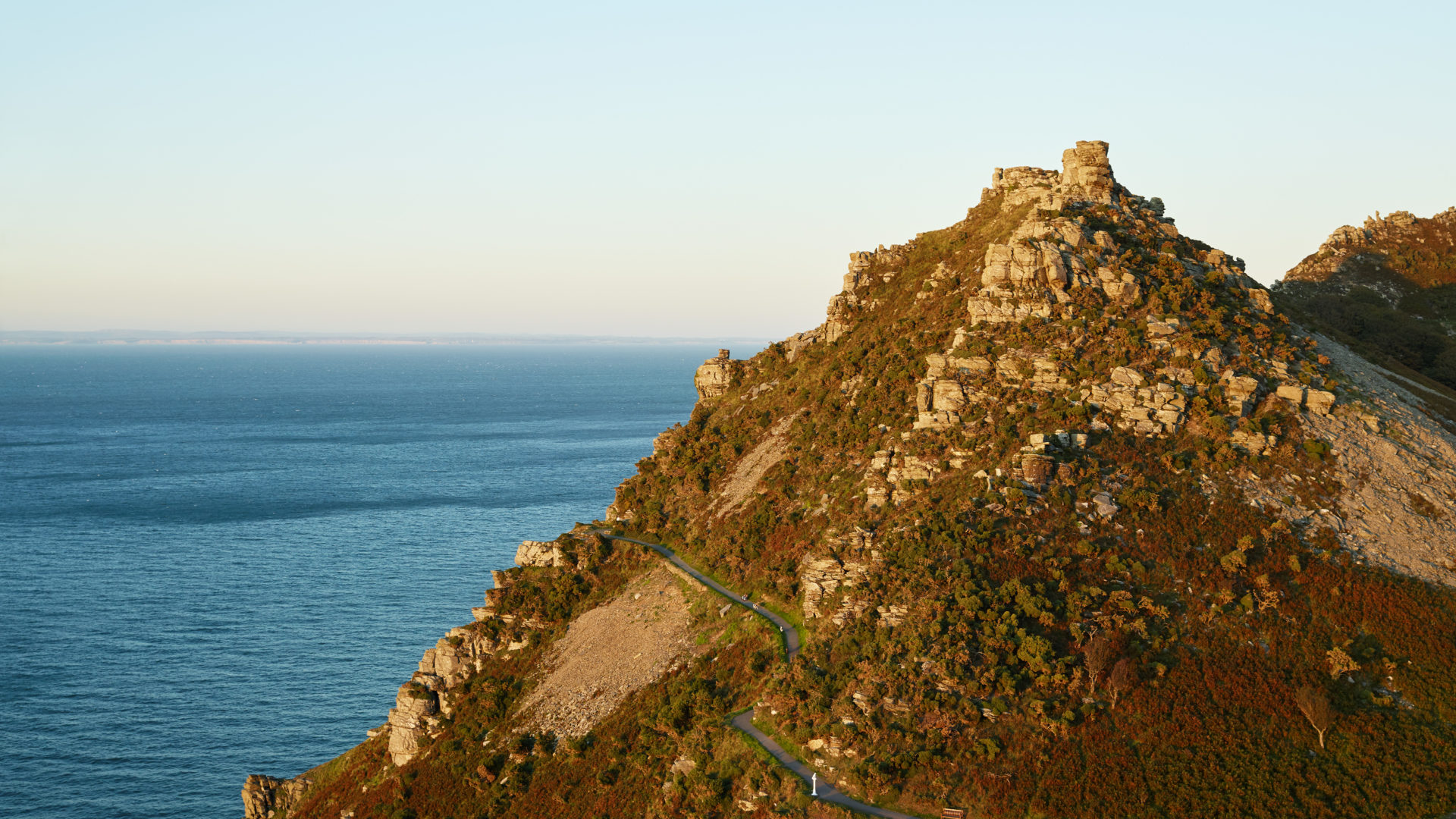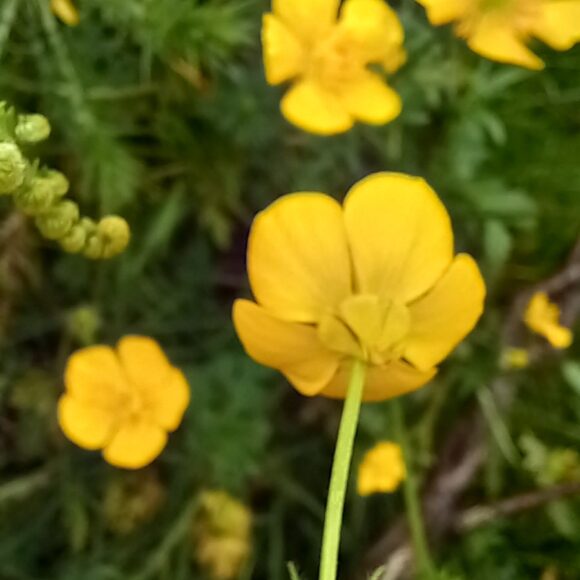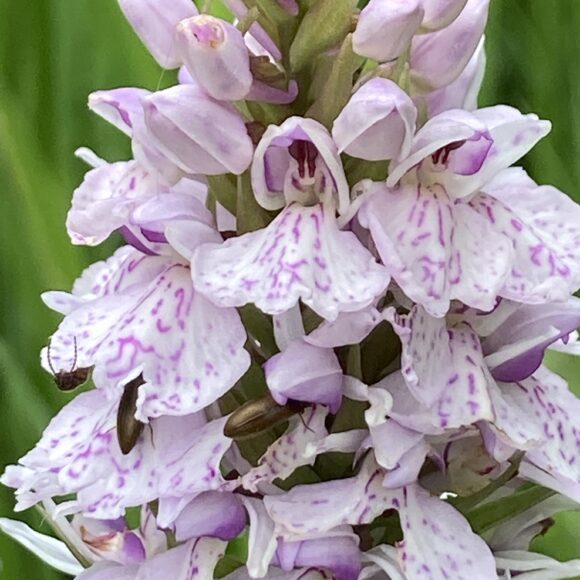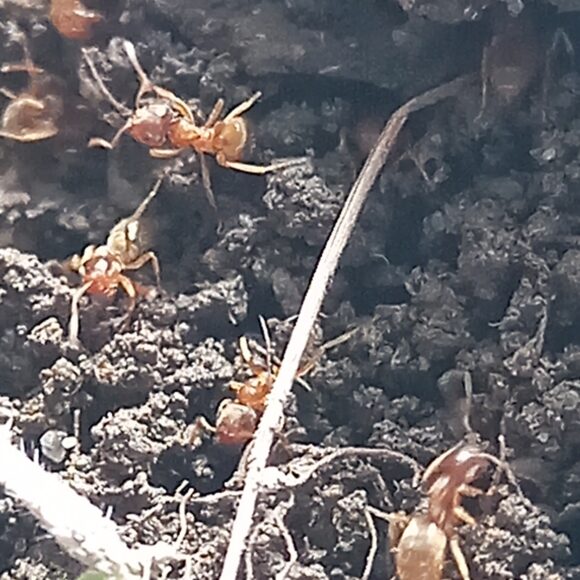
Look Wild: Wildflowers on Exmoor
-
Date posted: 27/06/2024
-
Time to read: 8 minutes
As summer blooms now is a great time to learn to identify wildflowers. Using iNaturalist and the National Parks UK Look Wild project is a great way to explore biodiversity in your area and get inspired to do more to help wildlife near you.

Wildflower season is well and truly here as we go through summer. We had a good attempt at taking part in ‘No Mow’ May both at home and in Exmoor National Park’s carparks and waysides. It has been great to practice our wildflower ID skills watching flowers bloom in the lawn and using them to learn about different common flowers. Having looked at buttercups we discovered the sepals (the parts forming the outer part of a flower that surround the petals) spread out around the petals and there was a faint groove in the stem, meaning we had creeping buttercups. The kids were then set the challenge to find a buttercup with sepals that bend away from the petals (on reward of an ice cream if they found one). Having the sepals in this position is called reflexed, and the kids spent the next twenty minutes looking at the back of every buttercup they could find searching for these reflexed sepals.
Observation by ©Patrick Watts-Mabbott

As I write this, we are entering ‘still too soon to cut the lawn’ June but practicalities prevail and we need some space to play, but we are leaving the edges and corners to see what else develops. This also increases the amount of insect life living there which in turn makes food for the young birds. Ideally, we would leave it a bit longer, and we are certainly going to experiment with monthly mowing to increase the wildflowers and insects living in our garden.
Leaving the garden and exploring Exmoor on walks, me and the kids love taking photos of flowers we find for the National Parks UK Look Wild project on iNaturalist, using the skills they developed with buttercups to make sure that they take photographs of the flower from different angles and include its leaves and structure to help identification. The orchids were one of their favourites to find. iNaturalist is amazing at providing plant identification and is more often right than wrong. A bit of internet searching for how to tell the difference between ‘x’ and ‘y’ can be very informative. The Botanical Society of Britian and Ireland (BSBI) have some excellent guides in their plant ID getting started section. We found the Dinky Moira guides on violets, speedwells, buttercups, and geraniums particularly useful.
Heath spotted orchid, observation by ©Elizabeth Atkinson

Looking for wildflowers led us to stumble across some amazing ants. The yellow meadow ant (often mistaken for stinging red ants, but harmless) starts to change the grassland it lives in. Making areas of raised well drained bare soil for flower seeds to start growing on. Bird’s-foot trefoil seems to be a common species that takes advantage of this in our area. You can tell the difference between greater and lesser bird’s–foot trefoil by examining the flower stalks, one of them has a hollow stalk.
Yellow meadow ants, observation by ©Patrick Watts-Mabbott
Since the 1930s the UK has lost 97% of its species rich meadows, largely due to changes in land use caused by the end of reliance of horses as our main form of transport. Hay meadows to feed our equine horsepower provided much of this habitat. As mechanisation took over – combined with other changes to increase food production – our wildflowers declined. On Exmoor, we have started the ‘sowing the seeds’ project aiming to restore 325 hectares of wildflower meadows across the National Park as well as working with landowners, communities, and school groups. You can do your bit too. By letting your lawn grow, and making some space for nature you can help the wildlife in your area as well. Find out more about making wildlife friendly lawns. On Exmoor our volunteers have been helping by to learning to scythe longer areas of grass to encourage the wildflowers to come through.
If you’ve been inspired to get out into nature, you can share any photos or observations with us and get featured on our social or our newsletter! Send your observations to connect@nationalparks.uk
Join iNaturalist and start identifying nature near you today! LookWild is a brilliant citizen science project that helps contribute to our data and knowledge of wildlife and habitat health across the UK.
This blog was written by Patrick Watts-Mabbott Volunteer and Outreach Officer at Exmoor National Park Authority